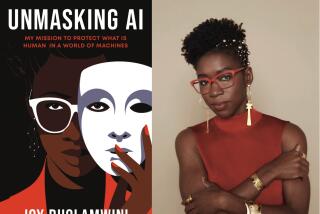Out there
“NOT another book about the Big Bang!” I hear you say. Well, yes, in a way, but there’s much to recommend “Brave New Universe: Illuminating the Darkest Secrets of the Cosmos” (Joseph Henry Press: 264 pp., $27.95). In the first place, there is (depending on how close your ear is to the ground) a lot of new news about the universe; in the second, this book makes an excellent primer. The authors, Paul Halpern and Paul Wesson, are both physics professors but not the kind who don’t care whether the public understands them or not. They’re blessedly lucid. If you’ve always wanted to know what physicists mean when they talk about such things as CP invariance or left-handed neutrinos, it’s all here, plain as day.
But this is the point: The idea that everything began 14 billion years ago with a tiny but unimaginably powerful Blam! and has steadily grown in every direction ever since is essentially over with. Thanks to new theoretical work and vastly improved detectors, we now know a lot more about the past, present and future of the cosmos -- enough to be able to speculate on the odds that they’re actually one and the same (see the last chapter).
The authors take us through the early history of cosmology as gracefully as possible -- noting (for example) of astronomer Edwin Hubble’s discovery in the 1920s of the universe’s expansion that “all the galaxies in creation were fleeing from each other like a roomful of angry solipsists.”
Back then, cosmology was a lot simpler. Since Hubble, we’ve stumbled upon dark matter, dark energy, an inexplicable and ominous acceleration in the universal expansion rate and the notion that neither gravity nor the speed of light are necessarily constants. Should we care? Halpern and Wesson think so. Our apprehension of reality is probably not The Way Things Are, they conclude, and by the end of “Brave New Universe” you’ll find it hard not to agree.
*
-- Sara Lippincott
More to Read
Sign up for our Book Club newsletter
Get the latest news, events and more from the Los Angeles Times Book Club, and help us get L.A. reading and talking.
You may occasionally receive promotional content from the Los Angeles Times.





